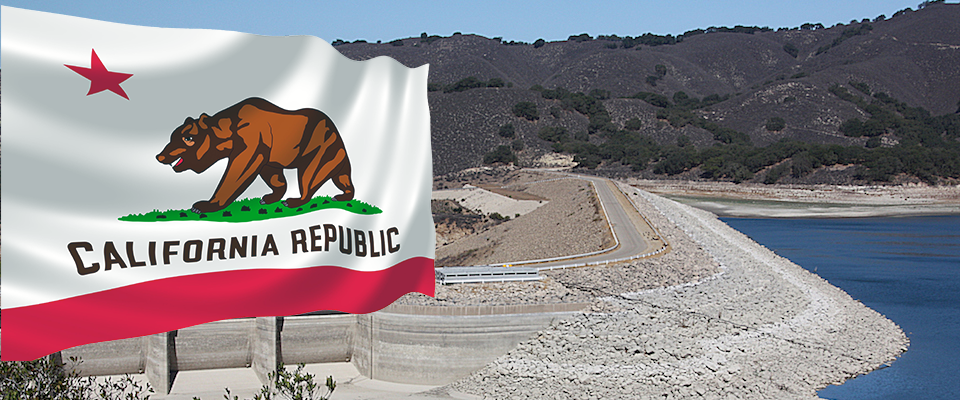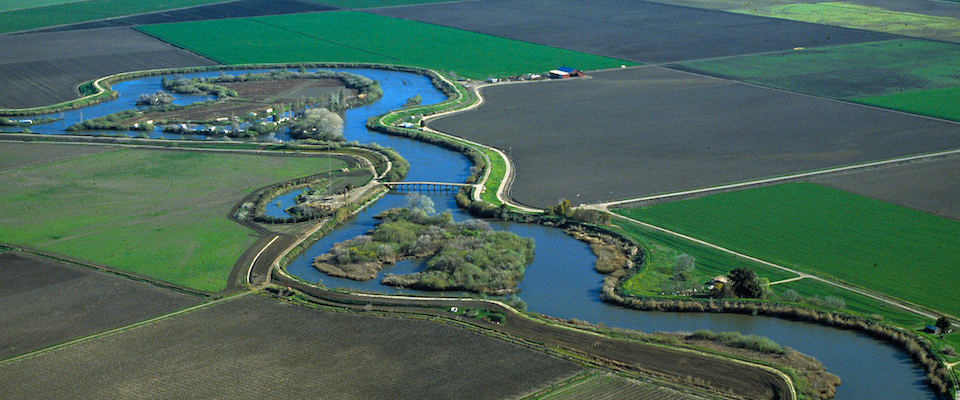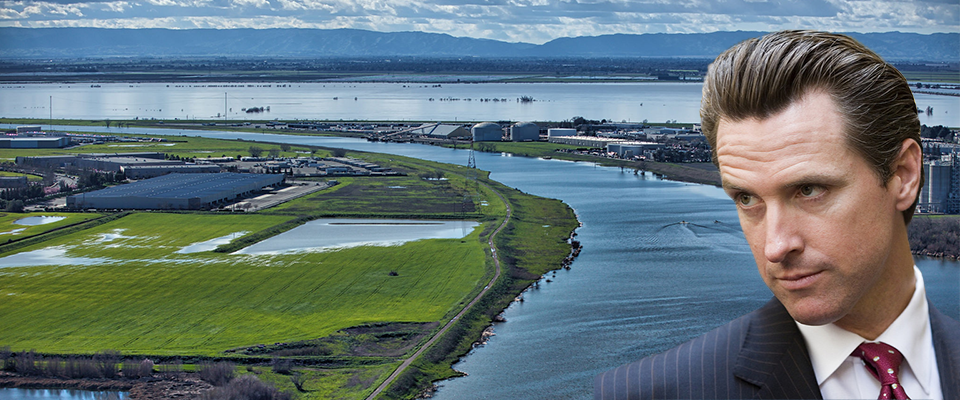U.S. Attorney General Jeff Sessions’ recent lawsuit against the State of California over immigration isn’t just about immigration, of course. More fundamentally, it’s about the limits of states’ rights. The move could be a harbinger of other attempts by the Trump administration to muscle obstreperous states that don’t conform to its agenda. And that begs the question: in what other areas could the feds trump, so to speak, California policies?
Water is a strong candidate. The State of California is ingeniously plumbed with a vast array of reservoirs, canals and aqueducts, largely managed through one of two massive systems: the federal Central Valley Project (CVP) and the State Water Project (SWP). Both suck water from the Sacramento/San Joaquin Delta and are often operated congruently to maximize efficiency. The main point of all this hydrological hardware is to move water from places where it’s abundant—mainly the north, which drains its rivers into the Delta—to the parched farms and cities of Southern California. Such transfers, however, have been somewhat constrained in recent decades by a number of state and federal accords that provide water for environmental purposes, e.g., to help sustain various imperiled species, particularly salmon.
Trump made it clear during his campaign that he was irritated by such fish-hugging folderol, siding instead with San Joaquin corporate farmers who were demanding more water. In general, state water policy has been more responsive to environmental and urban stakeholders than to federal policy. So now, with California apparently sliding into a new drought, the question is percolating: could the feds bigfoot California over water, as is happening with immigration?
“Since the 19th Century, water law historically has been left to the states—the federal government typically has been deferential.”
Short answer: yes. And there was a recent legislative attempt to do just that. Last year the U.S. House of Representatives passed H.R. 23, a bill that would strip many of the environmental safeguards governing the operation of the CVP.
“It would preempt California water law, which is unusual in a number of respects,” said Holly Doremus, a Berkeley Law professor and environmental law authority. “Since the 19th Century, water law historically has been left to the states—the federal government typically has been
deferential, and that includes the rights of western states to appropriate water, even from federal land.”
In fact, the National Reclamation Act of 1902—which laid the groundwork for water development in the American West—specifies that states generally are in charge of water rights, including those that pertain to federal reclamation projects within their borders. But while the U.S. Supreme Court confirmed that this statute applies broadly, it also ruled that there could be an exception of sorts: state authority on any given project was only supreme to the extent that it didn’t conflict with a congressional directive. But, if Congress wants to change the ground rules for the CVP specifically, it can. And H.R. 23 would do just that. Doremus calls the bill the “anti-Central Valley Project Improvement Act,” a reference to a groundbreaking law passed in the 1990s that slapped tough environmental restrictions on the CVP.
“It would reverse the Central Valley Project Improvement Act, and in fact goes much farther than a reversal,” Doremus says. “It basically exempts the CVP from the U.S. Endangered Species Act and other federal environmental law.”
If enacted, then, H.R. 23 could have devastating environmental consequences, particularly for the already beleaguered salmon runs that utilize the Delta and its rivers. But while H.R. 23 passed the House with a lot of momentum, it bogged down when introduced to the Senate, where it was referred to that body’s Energy and Natural Resources Committee. Opposed by California’s U.S. Senators Dianne Feinstein and Kamala Harris, it’s unlikely to go anywhere soon, says Doremus.
“The Senate is a more deliberative body than the House, and you’d need 60 Senators to get behind this legislation to get it passed,” Doremus says. “Given the upcoming election, I don’t see it going anywhere this year.”
That could change if Republicans manage to hang on to the House and keep, or slightly increase, their lead in the Senate—a possibility, despite all the talk of a “blue wave” building among the electorate. But the U.S. Congress isn’t the only potential impediment to the primacy of state water law, says Doremus. Trump has been remarkably successful in placing conservative judges in the federal judiciary, from the nomination of Supreme Court justice Neil Gorsuch through the lower courts.
“The case demonstrates that irrigators are increasingly ready to file takings claims anytime they get less water due to environmental
restrictions.”
“As long as the Senate remains in Republican hands, that’s likely to continue,” observes Doremus. “Senators can filibuster Supreme Court nominations, but not nominations to the lower courts. Many conservative judges already have been confirmed, and more confirmations are likely.”
A potential consequence of this trend, says Doremus, is the broadened interpretation of property rights protection, particularly in regard to “takings” lawsuits. Such cases involve the federal government appropriating a resource such as land while providing “just compensation.” Most legal analysts thought such compensation didn’t apply to water rulings, but a 2005 case, Tulare Lake Basin Water Storage District v United States, may have tilted precedent toward water rights holders. A federal district court ruled that a northern California water storage district—essentially a proxy for agricultural irrigators—was entitled to compensation for water “taken” to protect endangered species. The decision stood when the George W. Bush administration decided not to appeal, indicating at least tacit support for the irrigators.
Another court case Doremus thinks could impact California water law is Casitas Municipal Water District v United States. That case involves a challenge by local irrigators to stop the federal government from sending water down a Ventura River fish passage to aid imperiled steelhead trout. The farmers wanted compensation. They lost in their initial case and subsequent appeals to date, but the legal action demonstrates that resistance to water takings is growing, and likely is supported by federal lawmakers and conservative judges.
“I think [the Casitas case] demonstrates that irrigators are increasingly ready to file takings claims anytime they get less water due to environmental restrictions,” says Doremus.
But ultimately, California’s water resources—or rather, the lack thereof—may overwhelm water law, either state or federal. Winter high pressure ridges that divert storms away from California have gone from intermittent to semi-regular, and that’s pretty scary, says Dennis Baldocchi, a professor with Berkeley’s Department of Environmental Science, Policy and Management.
“There’s been some recent research indicating arctic ice cap water melting into the Pacific Ocean could be playing a role in these ridges,” says Baldocchi, “so we see more extremes—multiple dry years, followed by a very wet year, dry, wet, dry, wet—it makes water distribution planning very difficult.”
And that planning is all the more difficult when it must conform to antiquated statutes—that is, current state and federal law.
“We’re essentially using water rights adopted in the 19th century from English water law,” says Baldocchi. “We don’t have England’s climate. We have a Mediterranean climate, and our water laws should reflect that. Water is heavily subsidized—some farmers get it for $50 or $100 an acre foot, while cities have to pay $1,000 or more. We’re farming portions of the San Joaquin Valley that are desert. Water is way too cheap, and we waste it. We need to emphasize water conservation, water capture, and our prices for water should reflect its scarcity and the expense involved in delivering it. We can change our behavior and priorities – everyone used to have lawns, but now they’re fairly rare as people have switched to native, low-water landscaping. But to make those changes at the institutional level, you need the political will. And that’s lacking.”





















